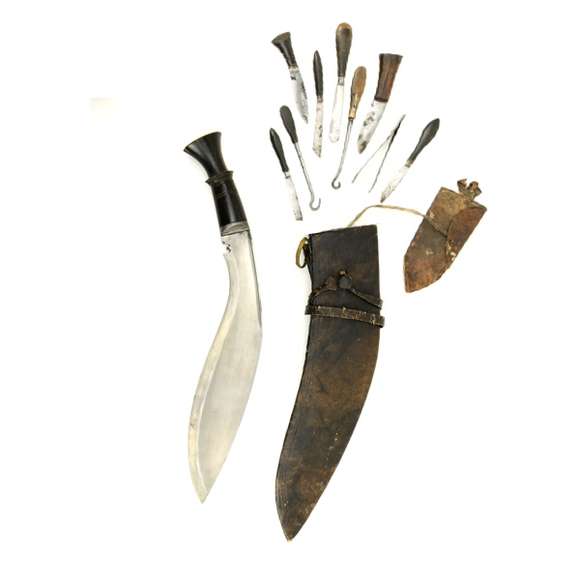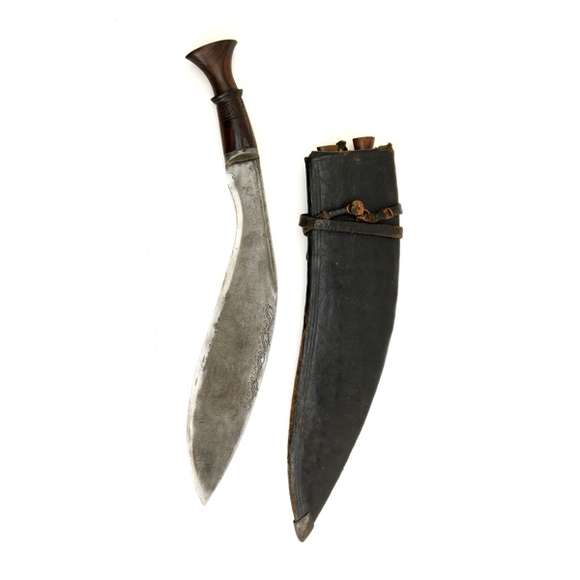Language: Nepali
Source: A 1931 dictionary
Description
According to Taylor, cirā (चिरा) is derived of cirnu, literally "To split, rip up, cut, lacerate". It is also used in the slightly different form, ciro (चिरो) to describe: "A splinter; cut, slice; (esp.) a slice of cucumber cut lengthwise." 1
It is probably the proper Nepali term for the word often written as chirra today. It is used to describe the ridges between each groove on a khukurī blade.2
Subtypes of khukurī based on cirā
Āṅa (आङ); flat, with no cirā like a kitchen knife.3
Āṅa khol (खोल् आङ); a single fuller running along the spine. (Commonly called ang khola.)
Du'i cirā (दुइ चिरा); "two split", two fullers in the blade. (Commonly called dui chirra.)
Tīna cirā (तीन चिरा); "three split", three fullers in the blade. (Commonly called tin chirra.)
Among antiques, I have not yet encountered more than three cirā but among reproductions, blades with even up to five are made.

Āṅa (आङ)

Āṅa khol (खोल् आङ)

Du'i cirā (दुइ चिरा)

Tīna cirā (तीन चिरा)

Ends of the cirā as seen from the spine.
Notes
1. Sir Ralph Lilley Turner; A comparative and etymological dictionary of the Nepali language. London: K. Paul, Trench, Trubner, 1931.
2. I owe Jonathan Said for explaining that the chirra actually denote the ridges and not the fullers themselves. Personal communication.
3. Resham Shercha, an ex Ghurka. Personal communication.






